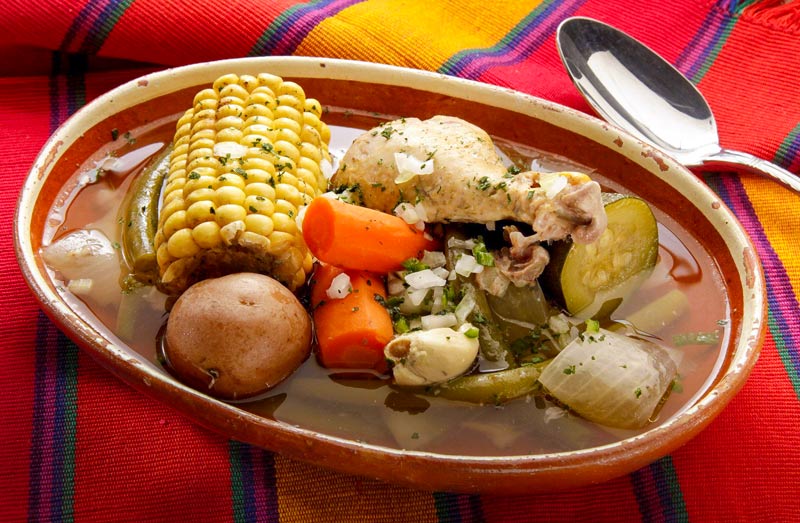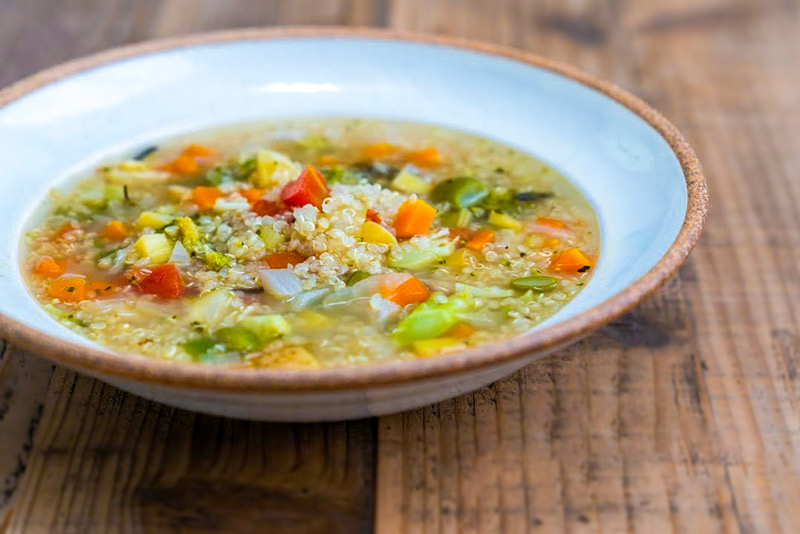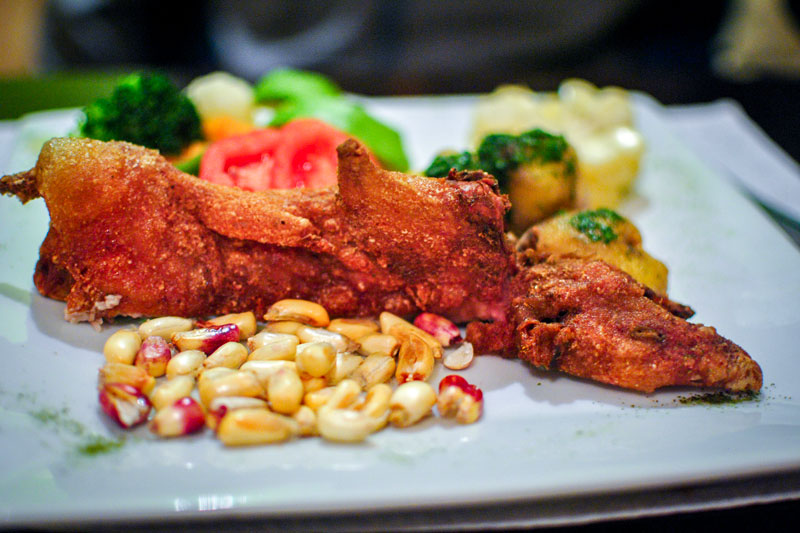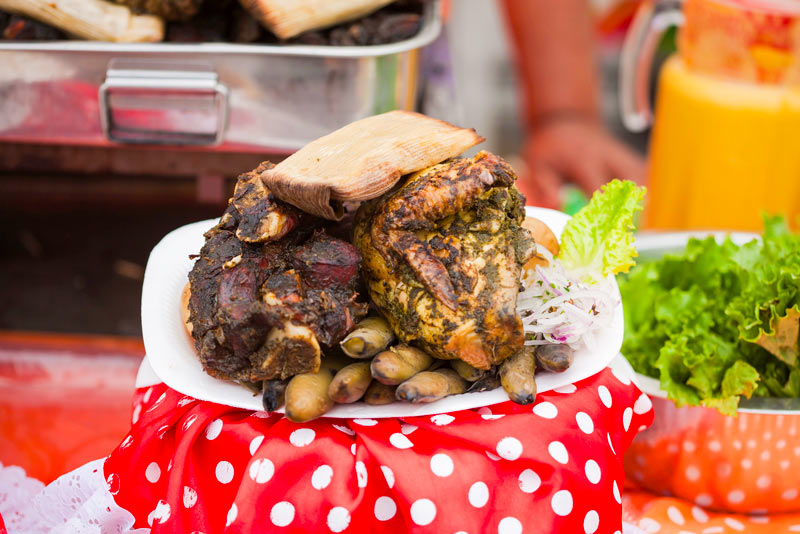Typical Cusco Gastronomic Adventure in your visit to Machu Picchu
Cusco is much more than just the starting point to Machu Picchu; it is a city where history, culture, and gastronomy intertwine in every corner. Its cuisine, influenced by the Incas, colonial heritage, and contemporary trends, offers a unique sensory experience that enhances any trip. Through its markets, streets, and restaurants, each flavor reveals the essence of traditional cuisine, turning the visit into a journey filled with aromas, textures, and tastes that tell the story of a culture and its deep connection to food.
- Tradition of Cusco’s Typical Dishes
- Cusco Gastronomy
- Gastronomic and traditional food in Machu Picchu
- Authentic ingredients of Cusco cuisine
- Recommendations
- Frequently asked questions
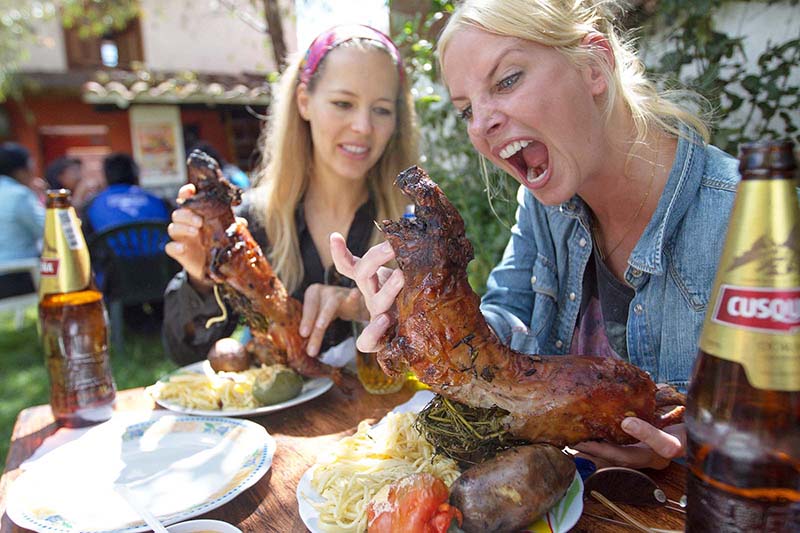
Visitors trying the popular Baked Guinea Pig
Tradition of Cusco’s Typical Dishes
The tradition of Cusco’s typical dishes is a living manifestation of Andean history, culture, and identity. Cusco has managed to preserve and pass down recipes over the centuries, blending native ingredients, ancestral techniques, and foreign influences. This culinary fusion results in a cuisine rich in flavors, textures, and aromas that reflect the deep connection between the land, its people, and their customs.
The preparation of these dishes is deeply rooted in a sense of community and tradition. During festivities such as Corpus Christi or Carnivals in Cusco, certain dishes take on special significance, becoming an essential part of the celebration. In this way, Cusco’s gastronomy serves as a unifying element that reinforces its cultural identity.
It is important to keep in mind that Cusco is located at a high altitude (3,400 meters above sea level), which may cause altitude sickness. It is recommended to acclimate for at least one day before engaging in strenuous activities. Additionally, during festivities, the city receives a large number of tourists, leading to crowded areas. Booking in advance is advised to ensure the best experience in Cusco.
Cusco Gastronomy
Cusco’s gastronomic journey is highly diverse, with each dish having its own unique recipe. Among the most emblematic and popular dishes in Cusco, we find the following.
Fried Trout
Trout is a fish found in Andean rivers and lakes. The fried version is one of the most popular preparations in Cusco. It is marinated with garlic, salt, and spices, then fried until achieving a golden and crispy skin. It is served with native potatoes, rice, and fresh salad, enhancing its delicate flavor and juicy texture.
Chiri Uchu
Known as Cusco’s “cold dish,” it is a specialty served during the Corpus Christi festival. It is a mix of ingredients from the highlands, coast, and jungle, symbolizing the gastronomic diversity of the Inca Empire. It includes roasted guinea pig, chicken, sausage, fresh cheese, toasted corn, seaweed, fish roe, and rocoto pepper. Its combination of flavors makes it a unique and festive dish.
Timpu or Puchero
This traditional stew is specially prepared during the Cusco Carnival and is a feast of flavors and colors. Its base consists of beef, lamb, or pork, slowly cooked with potatoes, cabbage, carrots, chickpeas, and cassava. It is served with rice and a broth infused with Andean herbs. The mix of textures and rich broth makes it an ideal dish for Cusco’s cold weather.
Chairo
This thick and nutritious soup is a legacy from the Inca era. It is made with lamb, chuño (dehydrated potato), wheat, carrots, and aromatic herbs such as huacatay. Its dense consistency and intense flavor make it perfect for withstanding the cold temperatures of the Andes.
Cusco-style Chicharrón
This dish consists of pork chunks slowly cooked in their own fat until crispy on the outside and tender on the inside. It is served with mote (boiled corn), golden potatoes, and an onion and fresh herb sauce. It is a traditional dish found in Cusco’s picanterías.
Quinoa soup
Quinoa, considered a superfood, is the star of this light and comforting soup. It is cooked with vegetables such as carrots, onions, garlic, and potatoes, sometimes with a touch of Andean cheese. It is a healthy and energizing option, perfect for acclimatizing to Cusco’s altitude.
Huatia
Huatia is an ancestral preparation where potatoes and sweet potatoes are cooked underground beneath hot stones, achieving a soft texture and a natural smoky flavor. This cooking method, inherited from the Incas, highlights the richness of Andean tubers.
Cusco-style Adobo
It is a pork stew slowly cooked in a base of chicha de jora, ají panca, garlic, and spices. Its thick and slightly spicy broth is ideal for recharging energy, making it a traditional breakfast dish after a night of celebration.
Baked guinea pig
Guinea pig is an icon of Andean gastronomy, and in Cusco, it is baked with aromatic herbs such as huacatay. Its skin becomes crispy while the meat remains juicy and flavorful. It is served with golden potatoes, corn, and salad. This dish is reserved for special occasions and celebrations.
Baked suckling pig
This festive dish consists of a suckling pig marinated with garlic, cumin, and chicha de jora, then slowly roasted until the skin becomes crispy and the meat juicy. It is served with tamales, onion salad, and mote, making it a traditional choice for festivities and family gatherings.
Pachamanca
Pachamanca is a traditional Andean dish, prepared by cooking meats, tubers, and vegetables in an underground stone oven. The cooking method is ancestral, based on slow and even cooking, ensuring a healthy preparation that retains the nutrients of the food. Additionally, its preparation is usually carried out in a communal and family setting, reinforcing traditions and cultural identity.
The gastronomic experience in Cusco goes beyond just eating; it is a gateway to the region’s living history. Each dish, from the delicacy of chactado guinea pig to the richness of Cusco-style adobo, carries ancestral traditions passed down through generations. The ingredients, carefully cultivated in the Andean highlands, blend to create unique and authentic flavors, inviting visitors to immerse themselves in a multisensory experience where the palate delights, and culture is felt in every bite.
Gastronomic and traditional food in Machu Picchu
The food in Machu Picchu (Machu Picchu Travel Guide) is a mix of traditional Andean flavors with a modern touch. The dishes take advantage of local ingredients such as potatoes, quinoa, and native herbs, cultivated in nearby areas, and are prepared using techniques that preserve traditional practices. Visitors can enjoy an authentic meal using fresh, local products, many of which hold symbolic meaning in Cusco’s culture. Although Machu Picchu is mainly famous for its archaeological site, its culinary offerings are an essential part of the experience, providing a direct connection to the area’s history and natural resources.
The culinary options cater to tourists’ expectations, blending the authenticity of local cuisine with modern practices. Restaurants and food stalls offer menus that reflect everyday life, allowing visitors to experience Andean culture firsthand through an authentic gastronomic journey.
Authentic ingredients of Cusco cuisine
| Ingredient | Characteristic/Origin | Example of Use in Cusco Dishes |
|---|---|---|
| Potato | Many native varieties, an essential staple in the region’s diet. | Soups, huatia, among others. |
| Quinoa | An ancestral grain, rich in protein and nutrients. | Salads, soups, and stews. |
| Corn (Choclo) | Large, sweet kernels. | Chicha de jora, tamales, side dish for various stews. |
| Ají (Panca/Amarillo) | Essential spices that add flavor, color, and mild heat. | Ocopa, seasonings for meats and potatoes. |
| Guinea Pig (Cuy) | Traditional Andean meat, a cultural emblem of the region. | Cuy chactado, pepián de cuy, among others. |
| Huacatay | Native aromatic herb with a unique flavor. | Ocopa sauce, seasoning for stews. |
| Oca | Andean tuber with varied flavors and colors. | Purées, stews, and fried dishes. |
| Alpaca Meat | Lean, high-quality meat from the Andean region. | Roasts, stews, and casseroles. |
| Trout | Freshwater fish from high-altitude rivers and lakes. | Fried or grilled dishes and stews. |
Recommendations
- Acclimate yourself before trying heavy meals to avoid altitude sickness.
- Explore local markets such as San Pedro or San Blas, which offer an authentic gastronomic experience with traditional flavors and affordable prices.
- Try traditional dishes in local “picanterías.”
- If you visit fish farms, lagoons, or nearby rivers, try freshly prepared fried trout for a more authentic experience.
- Pair your meal with traditional drinks like chicha de jora or frutillada.
- Buy local products as souvenirs—taking quinoa, purple corn, or Cusco chocolate made from Andean cacao will allow you to continue enjoying the cuisine at home.
- Experience the taste of guinea pig (cuy), a memorable moment of Cusco’s gastronomy.
Frequently asked questions
1) Is it safe to eat at Cusco’s markets?
Yes, markets like San Pedro and San Blas offer hygienic, healthy, and delicious food.
2) What traditional drinks pair best with Cusco cuisine?
The most traditional ones are chicha de jora and frutillada (fermented corn drink with strawberries). You can also try coca tea or muña tea to aid digestion.
3) Is Cusco’s food very spicy?
Generally, Cusco’s food is not spicy, but some dishes like chiri uchu include rocoto, a very spicy chili pepper. You can ask for a milder version if you’re not used to it.
4) Is food in Cusco affordable?
It depends on the place. Eating at markets or “picanterías” can be quite affordable (between 8 and 25 soles per dish), while tourist restaurants may have higher prices.
5) What is the best season to enjoy Cusco’s gastronomy?
The dry season, from May to September, is ideal for visiting Cusco. The stable weather allows you to fully enjoy markets, festivals, and outdoor culinary experiences.
6) What is the cultural significance of coca tea in Cusco?
Coca tea is more than just a drink; it is a traditional remedy for energy and is widely used today to prevent altitude sickness.
7) How does altitude affect the preparation and flavor of Cusco dishes?
Altitude affects both the texture of some ingredients and cooking techniques. The region’s crops have adapted to extreme conditions, resulting in more intense flavors and recipes that maximize the natural taste of each product.
8) What traditional cooking methods are used in Cusco?
Traditional methods include earth ovens, clay pots, and wood-fired grilling. These techniques help preserve the flavor and authenticity of local ingredients.
9) How have pre-Hispanic and colonial cultures influenced Cusco’s cuisine?
The fusion of Inca heritage and Spanish colonial influences is reflected in the flavors, ingredients, and cooking methods, creating a unique cuisine.
Advice from people who have been there
 By: Jordana L.
By: Jordana L.“I recommend eating in Aguas Calientes“
“We were very hungry, and just before entering Machu Picchu there is a restaurant of the Belmond Sanctuary Lodge hotel; however, with what we spent on a very good meal in that place we could have 2 more Machu Picchu tickets to enter the next day. On the other hand, in Aguas Calientes we ate delicious Peruvian food at a good price, we had lomo saltado for less than 4 dollars. This is why I recommend eating in Aguas Calientes.“
By Ticket Machu Picchu – Last updated, February 24, 2025
